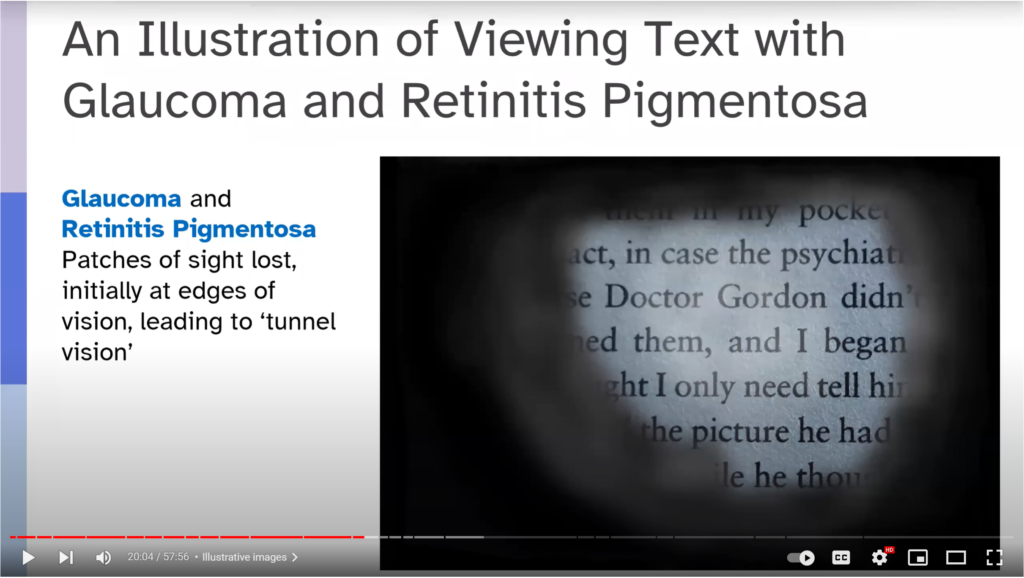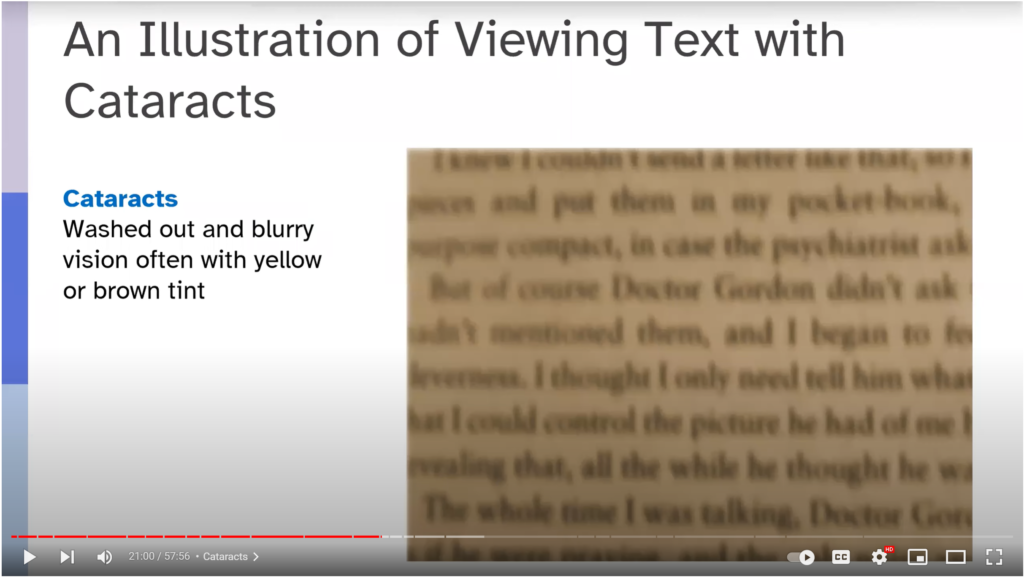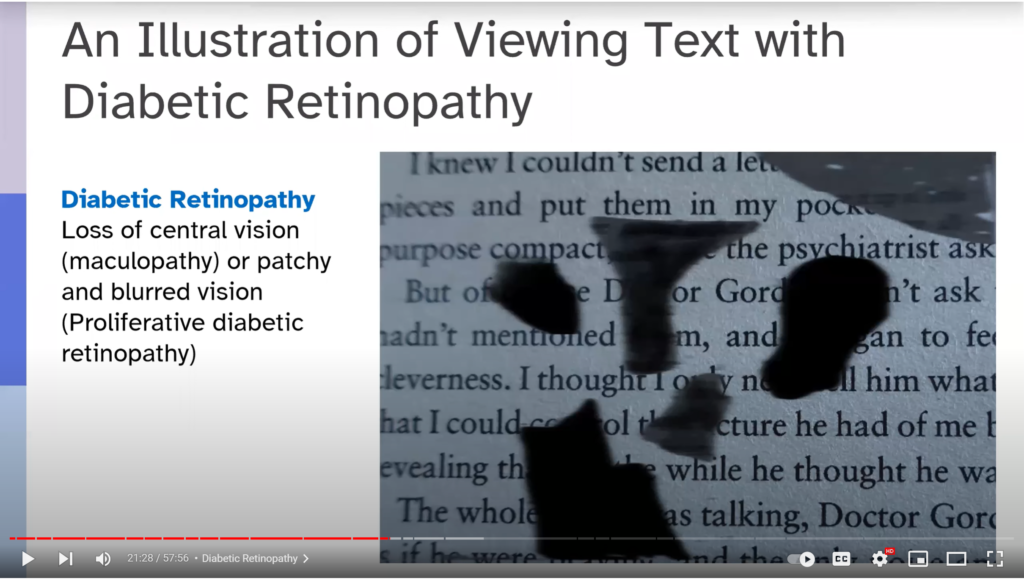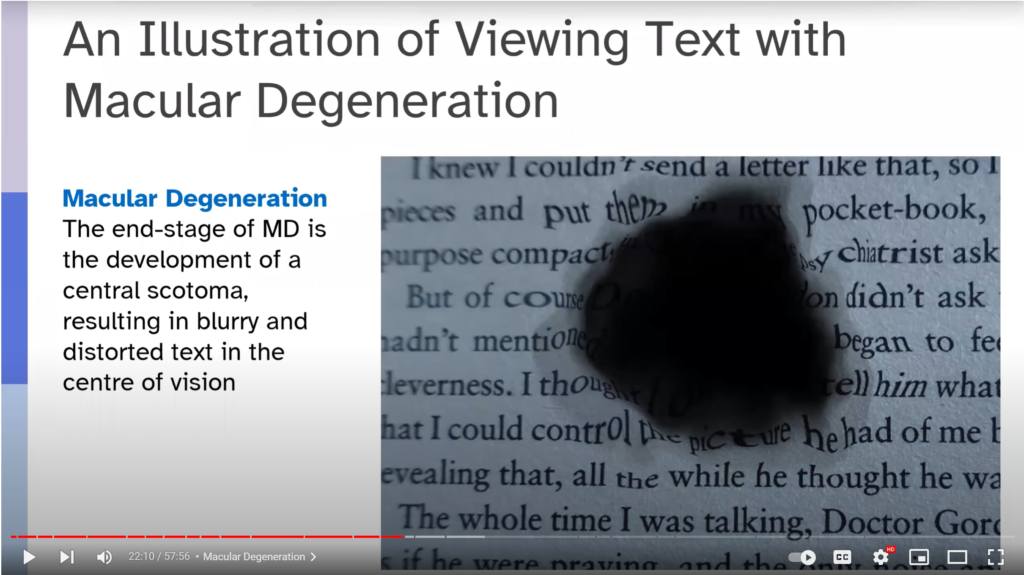Millions in the United States have impaired vision because of uncorrected refractive error, and many suffer vision impairment even after correction. A great many people cannot read small font or “the fine print.”
Fantastic (but worrisome) examples of how those with different visual-related print disabilities struggle with print text are included in this informative, one-hour webinar from the DAISY Consortium. (The webinar mentions how reading struggles are exacerbated when a person is trying to read during a stressful situation.)
A print disability is a learning, physical, or visual disability that prevents a person from reading conventional print or text:
- Learning: comprehension-related impairment
- Physical: the inability to hold or manipulate a book or paper (or a court form)
- Visual: severe or total sight impairment, or the inability to focus or move one’s eyes
This video segment about visual-related print disabilities begins at the 20-minute mark.
The video later details how creators can make their content more accessible, including a preference for 14-point font and increased line spacing. (Fun fact: the Delaware Superior Court rules require 14-point font for briefs, including footnotes. So does the federal State Department in its communications.)
Too busy for video? Try these screengrabs:
An illustration of viewing text with glaucoma and retinitis pigmentosa
About 3 million Americans have glaucoma. An estimated 100,000 Americans have retinitis pigmentosa.

An illustration of viewing text with cataracts
Cataracts affect more than 24.4 million Americans age 40 and older. By age 75, about half of all Americans have cataracts.

An illustration of viewing text with diabetic retinopathy
A recent CDC study found that diabetic retinopathy affects almost one-third of adults over the age of 40 with diabetes and more than one-third of African-Americans and Mexican-Americans. The condition affects nearly 8 million Americans, and that number is expected to double by 2050, but adults over 40 lack fundamental knowledge about diabetic retinopathy that could help save their sight.

An illustration of viewing text with macular degeneration
An estimated 19.83 million Americans were living with some form of age-related macular degeneration in 2019. Age-related macular degeneration is the leading cause of vision loss for Americans ages 50 and older.

Visual adjustments that improve reader accessibility

And thank you, Emily, for inspiring this post in your own special way.
Everyone deserves a world that is accessible and can be independently navigated. It’s on each of us to make it so.
